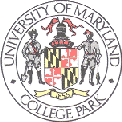
Technology Transfer
Problem
Goal
Keywords
Participants
References
 Zelkowitz, M. V. Assessing Software Engineering Technology Transfer Within
NASA, Technical Report NASA-RPT-003-95, NASA/GSFC, January, 1995.
Zelkowitz, M. V. Assessing Software Engineering Technology Transfer Within
NASA, Technical Report NASA-RPT-003-95, NASA/GSFC, January, 1995.
This represents a NASA-wide study of software engineering technology transfer across NASA. it describes in detail the steps various groups took in evaluating, prototyping, and inserting new technology into their development organization. Technologies such as Ada, Cleanroom, CLIPS, TAE, inspections, and object oiented design are discussed. ( Postscript )
 Zelkowitz M. V., Software Engineering technology infusion within NASA,
IEEE Transactions on Engineering Management 43, 3 (August, 1996)
250-261.
Zelkowitz M. V., Software Engineering technology infusion within NASA,
IEEE Transactions on Engineering Management 43, 3 (August, 1996)
250-261.
This is a condensed version of the above NASA technical report.
 Zelkowitz M. V. and B. Cuthill, Application of an information technology
model to software engineering environments, Journal of Systems and Software,
37, 1 (1997) 27-40.
Zelkowitz M. V. and B. Cuthill, Application of an information technology
model to software engineering environments, Journal of Systems and Software,
37, 1 (1997) 27-40.
This describes a model of technology innovation in the software development domain. It introduces two concepts: Process horizon (the idea that there is a limit to process complexity in any environment. If passed, errors result) and technological drift (the idea that all environments are improving over time due to general development of new technology. It is important to measure a given environment's deviation from this general trend.)